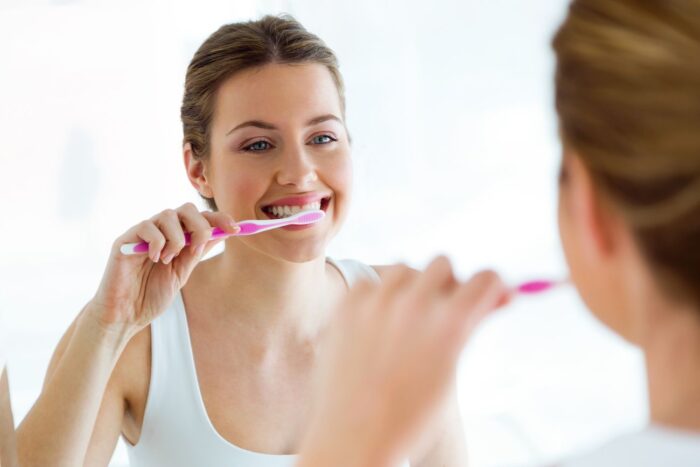Oral hygiene refers to the crucial practice of keeping your smile clean in order to ensure it stays healthy. Your mouth naturally contains bacteria that can generate a film of plaque that will eat away at your dental structure unless removed in a timely fashion. You scrub plaque and other residues from your smile by flossing daily and brushing your teeth at least twice per day.
Proper tools allow you to adhere to this thorough and consistent oral hygiene regimen. When you run out of floss or toothpaste, you know to purchase more. But many people may not realize that you also need to replace your toothbrush every so often.
If you use an old toothbrush, you could risk a decline in oral cleanliness and therefore increase the danger of certain dental concerns. Learn more about how using a fresh toothbrush will ensure you maintain good oral health by reading on.

What Happens to a Toothbrush Over Time?
Your toothbrush consists of an assortment of bristles attached to the end of a plastic handle. You use this in conjunction with abrasive ingredients in toothpaste to scrub residues from your teeth.
While durable, bristles will start to fray over time. Worn bristles cannot scrub as well as firm, new ones, meaning you might leave plaque on your smile after completing your oral hygiene routine.
A toothbrush also collects germs over time from both your mouth and the surrounding area, even if you rinse the brush before and after usage. These germs can transfer to your mouth and also contribute to the wear and tear of your toothbrush. Then you can have a higher chance of getting sick as well as worsening your oral health.
How Often Should I Replace a Toothbrush?
You should toss your old traditional, manual toothbrush every three months or so. This window of time ensures you can maintain proper oral hygiene without using tools that will hinder this regimen. If you notice that your bristles begin to fray before this time, perhaps due to rigorous brushing techniques, replace the toothbrush sooner.
Electric toothbrushes feature shorter bristles than manual ones. For this reason, you will need to replace the head of the brush more frequently, approximately every twelve weeks.
Some circumstances may mean you need to buy a new toothbrush even when the bristles are in good shape. For instance, if you contract a contagious illness, you should replace all the toothbrushes in your home to avoid spreading germs.
What If I Continue Using an Old Toothbrush?
You may wonder if you can get away with using your old toothbrush even when the bristles start to fray. If you do this, you will leave plaque and other harmful particles on your smile because you cannot scrub them efficiently.
When this happens, bacteria can eat away at your dental structure and weaken the teeth. You will have a higher risk of forming cavities and other dental issues. This will warrant extra attention from your dentist.
Practice good preventative dental care to avoid these issues. This will entail using the right tools during your oral hygiene regimen.
